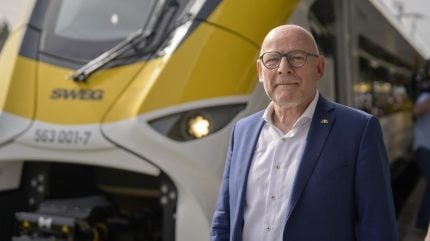
Siemens Mobility’s new battery-powered Mireo trainsets have entered service for the first time, in Germany’s Baden-Württemberg state.
20 of the Mireo Plus B battery hybrid commuter trainsets were purchased by the region in 2020.
The first journey, from Offenburg to Oberkirch and back, was ridden by Siemens executives and the state transport minister Winfried Hermann.
Hermann described the move toward battery-electric trains as a “new chapter” for the region, which he said was a “pioneer” for the technology.
“Baden-Württemberg is a pioneer with innovative train technology. All trains should be climate-friendly. We are relying on alternative, climate-friendly solutions wherever there are still no overhead power lines,” he said.
The electric trains can take power from overhead cables where they are installed, but crucially, they can also use this power source to charge internal batteries. The trains can then use battery power for up to 80km where lines are not yet electrified.
CEO of SWEG, the Southwest German Transport Company, which runs the railway in Baden-Württemberg said the new trains will improve passenger services.
“SWEG not only stands for quality, but also for innovation. We are especially pleased to now be able to make these innovative trains available to our passengers and will be demonstrating our role as a reliable partner to both the state of Baden-Württemberg and Siemens Mobility,” said Tobias Harms.
Electric trains have replaced diesel-powered Stadler Regio Shuttle trains. They will run from Offenburg to Bad Griesbach and from Offenburg to Hornberg. Because they do not require overhead power lines, the introduction of the new trains has allowed SWEG to update the timetable and reduce how many changes passengers must make to travel across the region.
“With the new network and the new trains, we are increasing the service frequency and providing higher capacity. Passengers now have more comfortable and attractive options for changing trains and boarding – whether in the cities or country,” Hermann explained.
Siemens Mobility estimated the new trains will save 1.8m litres of diesel every year.
The battery system, located under the car floors, includes two battery containers holding lithium-ion batteries designed to have a long service life, although Siemens Mobility did not specify how long. The trainsets have 120 seats and are equipped with a toilet, air conditioning and “special use” areas.



